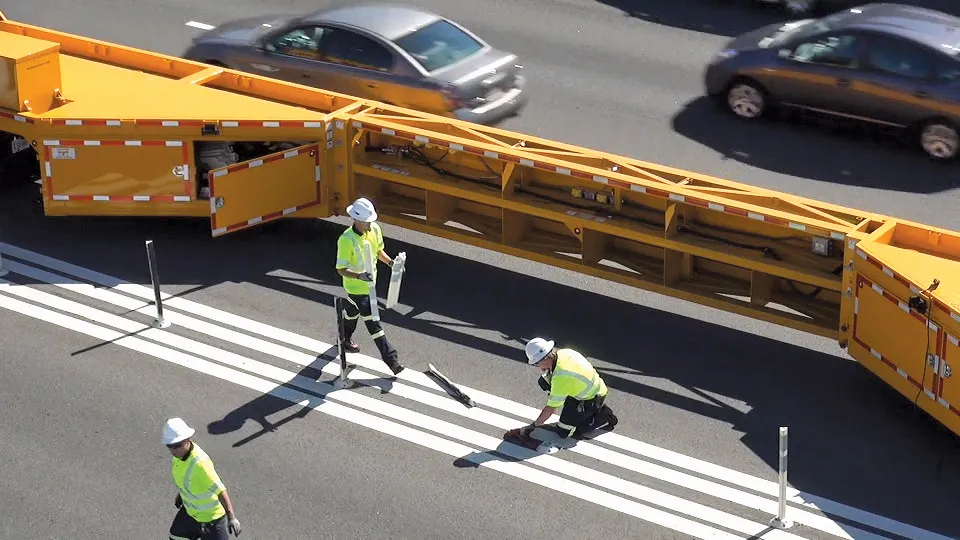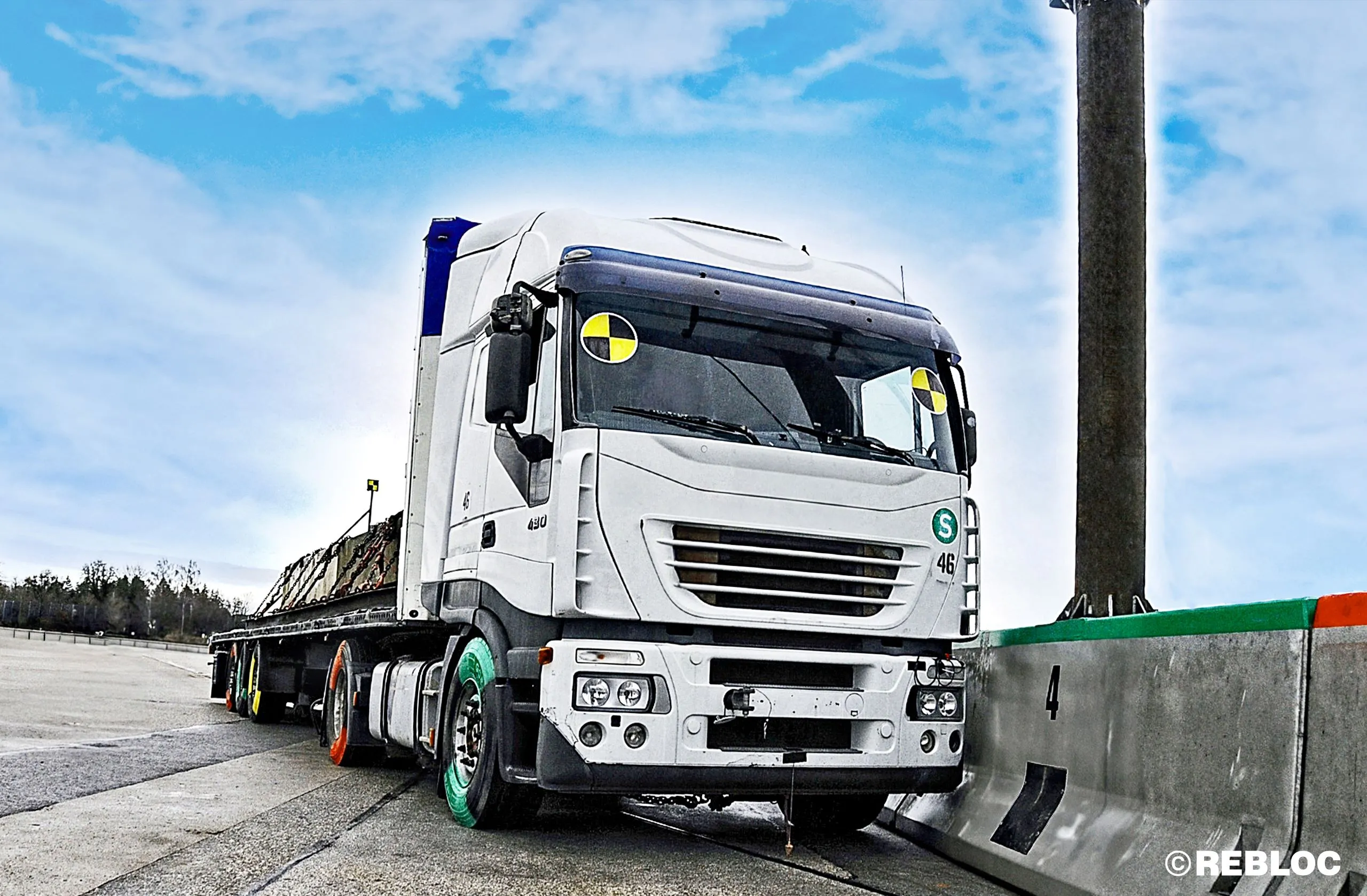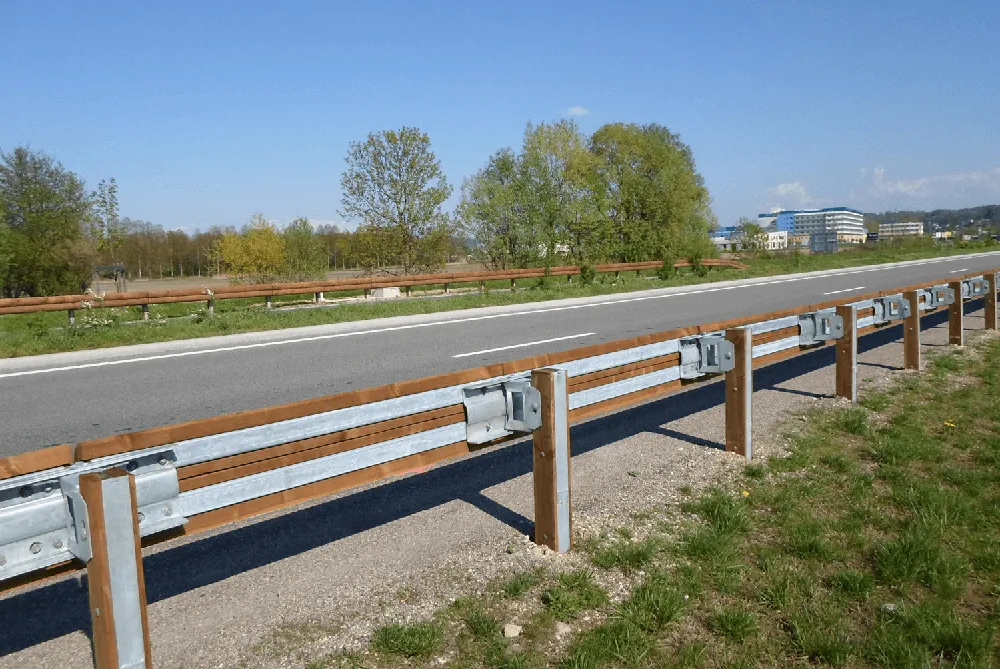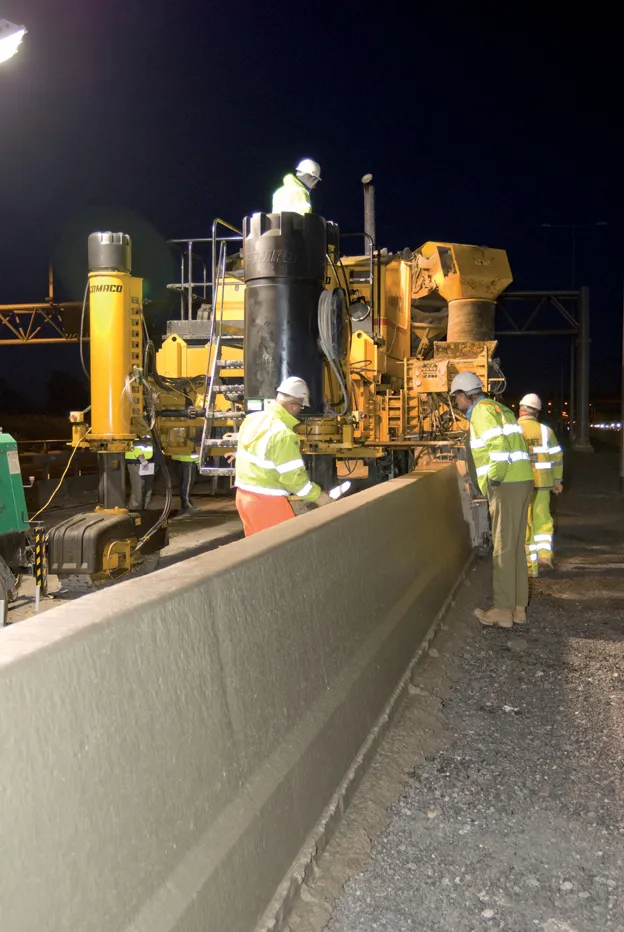The latest crash test for the end terminal T4, made by SMA – Safety Modular Absorber - has been carried out to the EN 1317-7 standard. It was done in addition to the complete set of crash tests performed according to part 7 of the EN 1317. The test TT 6.3.110 had already been executed on the critical impact point selected by the CSI TestLab. SMA Road Safety said it shows “the excellence of the SMA end terminal to absorb the impacts coming from the opposite traffic direction”. The critical impact point is at
July 5, 2016
Read time: 3 mins

The latest crash test for the end terminal T4, made by SMA – Safety Modular Absorber - has been carried out to the EN 1317-7 standard
It was done in addition to the complete set of crash tests performed according to part 7 of the EN 1317. The test TT 6.3.110 had already been executed on the critical impact point selected by the CSI TestLab. SMA Road Safety said it shows “the excellence of the SMA end terminal to absorb the impacts coming from the opposite traffic direction”. The critical impact point is at the back-stop of the end terminal. However, it was considered essential to have another crash test to demonstrate that the snagging problem has been avoided, although the structure of the device remains firm.
A further crash test was performed at 110kph with an impact angle of 15° on the barrier N2W2 and 5m before the back-stop of the end terminal.
SMA is part of Industry AMS – Automation Manufacturing Services – which recently exhibited at Intertraffic in Amsterdam. Many of the company’s crash barrier products use a collapsible, energy-absorbing honeycomb. A variation of this is used in a new moveable barrier end for temporary concrete barriers used to separate live lanes from work zones. The portable version is mounted on a very heavy cast iron base enabling it to be positioned at the end of the temporary lane dividers without needing to be fixed to the ground. A more permanent version can be used at the end of Jersey barriers and the standard (non-portable) design has been approved to the American standard for stopping a 2.2 tonne pick-up.
Another related innovation is a pole-mounted camera system called Geronimo that sits at the back of the crash cushion and records 10 seconds of video in an endless loop. If the crash cushion is impacted, the recording then stops and the video clip is automatically sent back to the control centre along with an alert that an impact has occurred. The new City Crash Cushion is tested to 50km/h and sits on a 1m x 1m footprint. Where required, an aluminium cover containing attenuation can be specifed to help protect motorcyclists in the event of an impact upon the cushion.
It was done in addition to the complete set of crash tests performed according to part 7 of the EN 1317. The test TT 6.3.110 had already been executed on the critical impact point selected by the CSI TestLab. SMA Road Safety said it shows “the excellence of the SMA end terminal to absorb the impacts coming from the opposite traffic direction”. The critical impact point is at the back-stop of the end terminal. However, it was considered essential to have another crash test to demonstrate that the snagging problem has been avoided, although the structure of the device remains firm.
A further crash test was performed at 110kph with an impact angle of 15° on the barrier N2W2 and 5m before the back-stop of the end terminal.
SMA is part of Industry AMS – Automation Manufacturing Services – which recently exhibited at Intertraffic in Amsterdam. Many of the company’s crash barrier products use a collapsible, energy-absorbing honeycomb. A variation of this is used in a new moveable barrier end for temporary concrete barriers used to separate live lanes from work zones. The portable version is mounted on a very heavy cast iron base enabling it to be positioned at the end of the temporary lane dividers without needing to be fixed to the ground. A more permanent version can be used at the end of Jersey barriers and the standard (non-portable) design has been approved to the American standard for stopping a 2.2 tonne pick-up.
Another related innovation is a pole-mounted camera system called Geronimo that sits at the back of the crash cushion and records 10 seconds of video in an endless loop. If the crash cushion is impacted, the recording then stops and the video clip is automatically sent back to the control centre along with an alert that an impact has occurred. The new City Crash Cushion is tested to 50km/h and sits on a 1m x 1m footprint. Where required, an aluminium cover containing attenuation can be specifed to help protect motorcyclists in the event of an impact upon the cushion.









